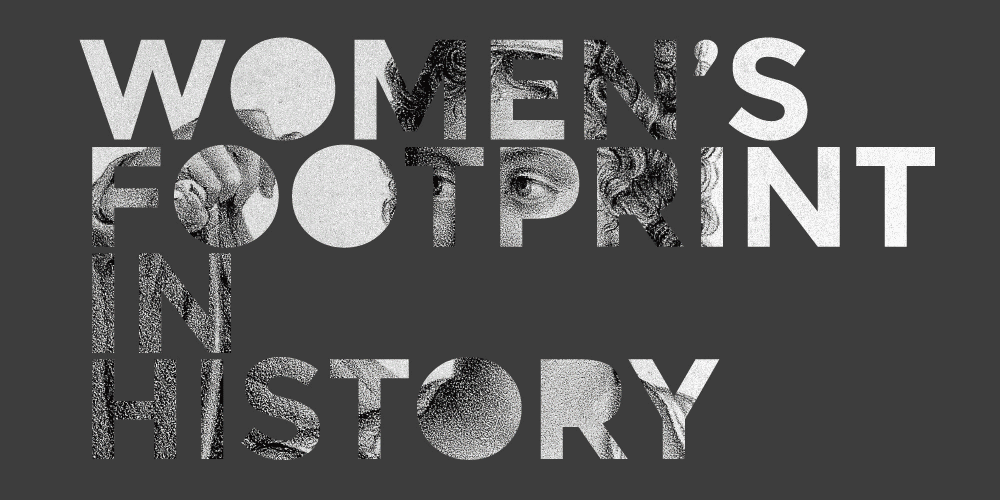
Coming soon to Internet Explorer 8. This web is currently best experienced in Google Chrome, Mozilla Firefox or IE 10+.


Coming soon to Internet Explorer 8. This web is currently best experienced in Google Chrome, Mozilla Firefox or IE 10+.

Recognized as one of the first female gynecologists, Agnodice is said to have courageously practiced medicine in Greece when women faced the death penalty for doing so. Eventually caught, she was vindicated and allowed to continue when patients came to her defense.
Despite extraordinary medical advances throughout history, more than 800 women still die every day from preventable causes related to pregnancy and childbirth – 99 per cent of them in developing countries.
Following criticism for studying secular texts, celebrated writer and nun Sor Juana Inés de la Cruz of Mexico memorably defended women’s rights to education in 1691 by proclaiming “one can perfectly well philosophize while cooking supper." A national icon, today she appears on Mexican currency.
Even with substantial progress in achieving gender parity at all levels of education, disparities remain in some developing regions. For instance, only 70 girls are enrolled for every 100 boys in tertiary level education in sub-Saharan Africa.
Ahead of her time, prominent women’s rights activist and Russian philanthropist Anna Filosofova believed it was better to educate and train the poor rather than provide cash benefits. In 1860, she co-founded a society to provide support to the poor, including not only affordable housing but also decent work for women.
Poverty is one of the greatest challenges of our time, disproportionally affecting women and girls; their health, employment and safety. Today, 836 million people still live in extreme poverty.
New Zealand’s most celebrated suffragist, Kate Sheppard along with fellow campaigners presented a “monster” petition to Parliament demanding women’s suffrage with nearly 32,000 signatures — an instrumental move that led to New Zealand becoming the first self-governing country to grant national voting rights to women in 1893.
Women’s representation is still lagging in politics. In 2015, only 22 per cent of all national parliamentarians were female, a slow increase from 11.3 per cent in 1995.
A pioneering Japanese editor, writer and political activist, Raichō Hiratsuka co-founded her country’s first all-women run literary journal Seitō in 1911 through which she challenged women’s traditional roles at home. In the magazine’s inaugural issue, she emboldens women to “reveal the genius hidden within us!”
Women are severely underrepresented in the news today. Only around 1 in 4 people heard or read about in news are women. Also, women only hold 27 per cent of top management jobs in media organizations.
Doria Shafik catalyzed a women’s rights movement in Egypt when in 1951 she, alongside 1,500 women, stormed parliament demanding full political rights, pay equality and reforms to personal status laws. These efforts, along with countless others to come, helped pave the way to women’s right to vote in 1956.
Gender equality before the law still does not always translate into reality. Although more than 140 countries guarantee gender equality in their constitutions, women face inequalities directly and indirectly through laws, policies, stereotypes and social practices.
In 1951, British chemist Rosalind Franklin paved the way for the discovery of DNA’s double-helix structure through the revolutionary use of X-ray diffraction. Franklin captured the critical photo evidence through 100 hours of extremely fine beam X-ray exposure from a machine she had refined.
Women today comprise only around 30 per cent of researchers in natural sciences, engineering and technology, medical and health sciences, agricultural sciences, social sciences and humanities.
The first indigenous person to win the Nobel Peace Prize, Rigoberta Menchú campaigned for social justice, ethno-cultural reconciliation and indigenous peoples’ rights during and after Guatemala’s Civil War (1960–1996). In 2006, she co-founded the Nobel Women's Initiative to magnify women’s work on peace, justice and equality.
Women are integral to lasting peace. Studies show there is a 35 per cent greater chance of peace agreements lasting 15 years when women participate. Yet women are still largely absent from the peace table.
A pioneering American tennis champion and social change activist, Billie Jean King famously threatened to boycott the U.S. Open in 1973 unless women were given equal prize money — a demand that was met, making the U.S. Open the first major tournament of its kind to offer pay equality.
Even with her efforts, the gender wage gap still exists for women in all walks of life. Globally, women earn 24 per cent less than men.
As a plaintiff, Unity Dow won a historic case in 1992 enabling women married to non-citizens the right to confer nationality to their children. Later, as Botswana's first female High Court judge, she gained international acclaim on a case that allowed Botswana’s San people to return to their ancestral homelands.
When it comes to nationality, progress still needs to be made. In more than 60 countries, women are denied the right to acquire, change or retain their nationality, including to confer nationality to non-national spouses.
A staunch environmentalist, Vandana Shiva formed Navdanya in India during the early 1990s to conserve unique strains of seed crops and to educate farmers on eco-diversity. Under Navdanya, she also created a programme on biodiversity, food and water, which empowers women in protecting the livelihoods of their communities.
Sustainable development is a key driver to women’s economic empowerment. Yet, today, less than 20 per cent of landholders are women. Gender differences in access to land and credit can limit economic opportunities for women farmers.
Taking their government to court on child marriage, former child brides Loveness Mudzuru and Ruvimbo Tsopodzi made history in 2016 when Zimbabwe’s Constitutional Court ruled in their favour stating that nobody in the country may enter into marriage, including customary law unions, before the age of 18.
Worldwide, more than 700 million women alive today were married before age 18. Out of them, 250 million were married before 15.
 ViewHide credits
ViewHide credits
